

Explore the Galapagos Islands in an 8-day adventure packed with incredible wildlife and scenic beauty. From snorkeling with marine life at Mosquera Islet and Bartolomé’s Pinnacle Rock to observing land iguanas on South Plaza and giant tortoises on Santa Cruz, this journey offers unforgettable experiences. Highlights include Kicker Rock, Black Turtle Cove, and the volcanic landscapes of Sullivan Bay.
8 Day Galapagos Itinerary
Day 1: Baltra Island & Mosquera island
AM – Arrival at Baltra Airport
Upon arrival at Seymour Ecological Airport, a check-up is carried out first, to ensure that no foreign plant or animal species are introduced on the islands. Furthermore, your TCC (Transit Control Card) is stamped; this must be kept safe during your trip, as it has to be presented again on your return flight. In addition, entrance to the Galapagos National Park is due for entry (US $ 100), if this has not yet been paid. Your guide will meet you at the airport, assist you with the luggage and accompany you on the short bus ride. Here you will climb aboard the yacht Solaris. After greeting the crew and the captain, your cabins will be assigned to you and then you will enjoy your first lunch on-board.
PM – Mosquera
Galapagos sea lions are true beach lovers and Mosquera offers beautiful white coral sand beaches, which contrast with the blue water and thus attract numerous sea lions. During a beach walk you can observe numerous species of waders and sanderlings. Between the rocks the red clip crabs wait to play hide and seek while you try to get the perfect photo. If you are lucky, you may even encounter yellow-crowned night-herons or even a red-footed booby.
Day 2: Genovesa Island: Prince Philips Steps & Darwin Bay
AM – Darwin Bay (Genovesa)
Inside the submerged caldera of Genovesa lies Darwin Bay. The small-scaled area will surprise you as find yourself walking along a coral sand beach, crossing barren lava formations and creeks, passing tidal pools, shrubs and further ahead following the top of some cliffs. Every single species has occupied its own ecological niche. Whimbrels and wandering tattlers forage actively along the surf, next to resting Galapagos sea lions. Impressive frigatebirds and red-footed boobies nest in the mangroves, where you can also see vocalists such as the yellow warbler, Darwin’s finches and the Galapagos mockingbird. Uniquely, two subpopulations of the same species of large cactus finch differ in their singing.
PM: Prince Philip’s Steps (Genovesa)
We will sail to nearby Prince Philip’s Steps, close to the entrance of the broken caldera. Sometimes a Galapagos fur seal might be resting on one of the shaded ledges. Here you can snorkel once again, and then follow the guided trail through clifftop seabird colonies. At the seaside of the rim, the bushes open up and you can enjoy wide views and the strong sea breeze. Following the exposed rim you will first pass a colony of Nazca boobies and finally reach the extensive storm petrel nesting places, where if you are lucky you can see how the well-camouflaged short-eared owl hunts for them on foot!
Day 3: South Plaza Island & Santa Fe Island: Barrington Bay
AM – South Plaza
You will enjoy an unforgettable guided walk on South Plaza, the best place to encounter endemic Galapagos land iguanas, patient and photogenic models. You can also look out for some of the unique hybrids between the male marine iguana and female land iguana. Arriving at the upper rim, about 20m/75ft downwards impressively droning waves splash against the foot of soaring cliffs. Clouds of petrels, storm petrels, shearwaters and brown noddies make spectacular flights and sometimes look like they’re walking on the waves. Take your binoculars and don’t miss the red-billed tropicbird with its graceful long tail and spectacular mating fights. These cliffs are also a nesting place for the endemic swallow-tailed gull.
PM – Barrington Bay (Santa Fe)
You will land right in the middle of a Galapagos sea lion colony on the beach, where you will have time for a refreshing swim or excellent snorkelling among tropical reef fish in the crystal-clear azure waters of Barrington Bay. You will also encounter bizarre giant prickly pear cactus (opuntia) forests. These are the largest cacti on the islands, with extremely thick trunks, and can grow over 10m/33ft tall! We have a wet landing at the beach of Santa Fe where we have a guided nature walk. This extraordinary island is a remnant of probably the most ancient volcano on the Galapagos. Your guide will decide whether the easy shorter circuit is followed, or a strenuous longer hike land inward (moderate level; about 3km/2mi).
Day 4: San Cristóbal Island: Kicker Rock & Interpretation Center
AM – Kicker Rock (San Cristobal)
Kicker Rock is a huge offshore block of rock with a sharp tower next to it. Reaching about 150m/500ft above sea level, from the side it has the form of a giant shoe (hence its name Kicker Rock), whilst from a longitudinal direction it resembles a sleeping lion (hence its Spanish name Leon Dormido). Before breakfast you will enjoy a dinghy-ride and optional snorkelling where you might encounter octopuses, different species of sharks and Pacific green turtles.
PM – Interpretation Centre (San Cristóbal)
After saying goodbye to Route B4 passengers, we head to the Interpretation Centre, close to the provincial capital Puerto Baquerizo Moreno. Information panels in English and Spanish, pictures, models and diagrams conveying the origin of the Galapagos can be found. The detailed exhibition also provides insights about the volcanic formation of the archipelago, its remoteness from the mainland, its marine currents, its particular climate, the arrival of different species and their spread, and more.
Day 5: Española Island: Gardner Bay & Suarez Point
AM – Gardner Bay (Española)
On the north-eastern coast of the island of Española, Gardner Bay offers a wonderful place to refresh in the turquoise sea and to admire the large number of colourful reef fish. You will also have the opportunity to snorkel side by side with green sea turtles, or to enjoy the proximity of the playful Galapagos sea lion. The white sand beach is also an important breeding ground for the green sea turtles. In the crystal-clear ocean, sometimes whales can be sighted under certain circumstances.
PM – Suarez Point (Española)
This rocky area is home to the most impressive and diverse seabirds of the archipelago. The endangered Galapagos albatross returns to Española (March – December) annually. This allows visitors to admire the balances of pipes and bows (especially in October). Blue-fronted and nazcat oil pipes, black-tailed gulls and red-billed tropic birds are native to this island. Along the southern coast, high cliffs allow spectacular views of ascending birds and the sea water shot through air holes.
Day 6: Floreana Island: Post Office Bay, Punta Cormorant & Champion Islet
AM – Post Office Bay (Floreana)
While having lunch we will navigate back to Post Office Bay (about 1hr). Post your holiday greetings in the historical barrel, one of three nearby visitor’s sites on Floreana’s north coast (short displacement, wet landing) and relax. Besides Galapagos sea lions, Pacific green turtles and golden cownose rays you might spot Galapagos penguins! This is the only place in the south-eastern archipelago where penguins reside. Explore by inflatable dinghy – or in your own pace by sea-kayak – another submerged crater rim around the bay of Baroness Lookout. Climb the miniature basaltic cone of
Baroness Lookout and take in the paradisiacal coastal views.
This viewpoint was the favourite spot of one of Floreana’s first colonists, the eccentric Baroness and self-proclaimed ‘Empress of Galapagos’ Eloisa von Wagner Bosquet, who even built her house a few metres behind. She and one of her lovers were the first in a series of mysterious disappearings and deaths in the 1930s.
PM – Punta Cormorant & Champion Islet (Floreana)
The peninsula of Cormorant Point forms the extreme north cape of Floreana, which was formed by a number of smaller volcanic cones, covered with tropical dry forest (palo santo). At the landing beach, you will be welcomed by a small Galapagos sea lion-colony. The green sand on this beach contains a high percentage of glassy olivine crystals that have been blown out by the surrounding tuff cones. The ‘flour sand’ beach on the southern side of the peninsula is made up of even finer white coral sand that feels very smooth on your feet. Parrotfish have pulverised it, grinding the calcareous skeletons of living coral. You can spot schools of stingrays who love burying themselves in the sandy bottom. During the first months of the year, Pacific green turtles come ashore to bury their eggs.
Day 7: Santiago Island: Sullivan Bay & Bartolomé island
AM – Sullivan Bay (Santiago)
The arrival in Sullivan Bay is like a moon landing. The desolate, sprawling fields seem to be mostly lifeless, but this island, which is particularly popular among photographers, still offers a lot to see. There is even some life! Green sea turtles burrow in the small white sand beach, where you can also find crabs, blue herons and oystercatchers.
PM – Bartolomé
The island of Bartolomé rises 114m above Sullivan Bay. Climb the steps of the Bartolomé Peak Trail and you will be rewarded with panoramic views over volcanic peaks, lunar craters and lava fields. Afterwards you can refresh yourself at the foot of the famous “Pinnacle Rock” and explore the underwater world in the shallow water while snorkelling. Although there is little vegetation on this island, it has two breathtaking beaches, where sea turtles live. At the foot of the mountain you can also discover a small colony of Galapagos penguins.
Day 8: Santa Cruz Island: Black Turtle Cove
AM – Black Turtle Cove (Santa Cruz)
This small bay is located on the north side of the island of Santa Cruz and offers a unique backdrop for unique adventures. The landscape makes you feel as if you’re in the Amazon rainforest rather than near the sea. Explore the quiet emerald lagoon and surrounding shallow bays with the inflatable dinghy. The crystal clear water allows you to spot groups of whitetip reef sharks, blacktip reef sharks, hammerhead sharks, gold rays and spotted eagle rays.
Transfer to the Airport

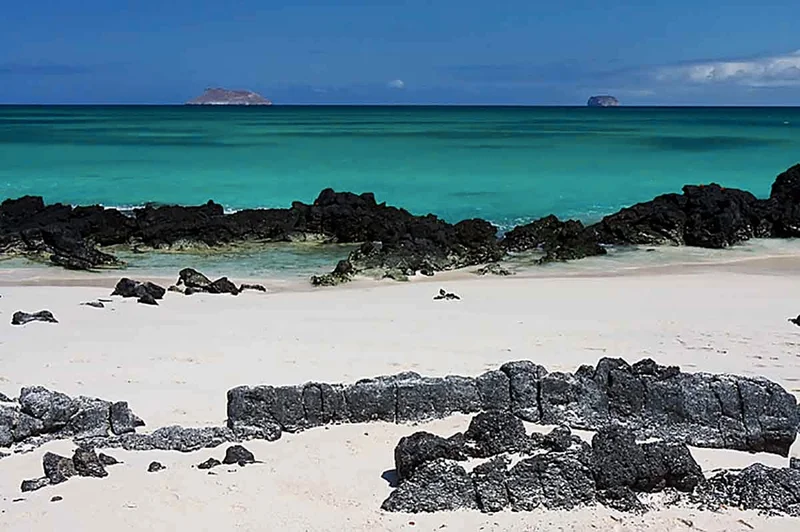
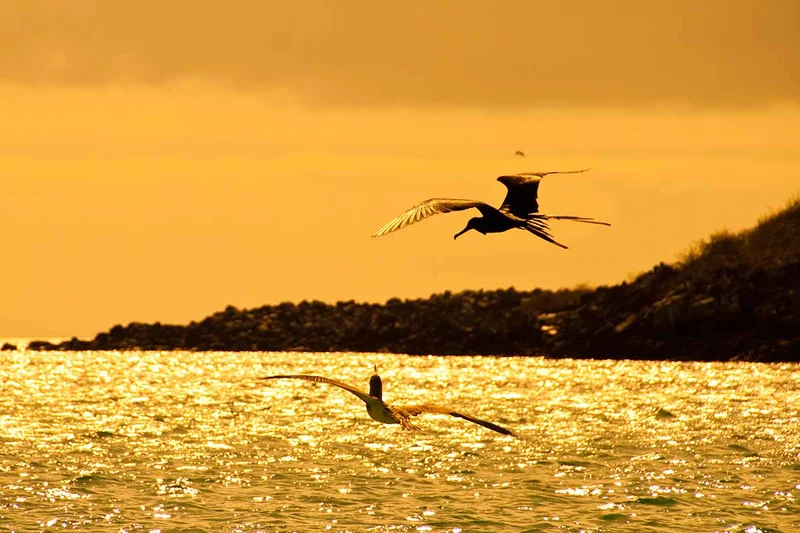

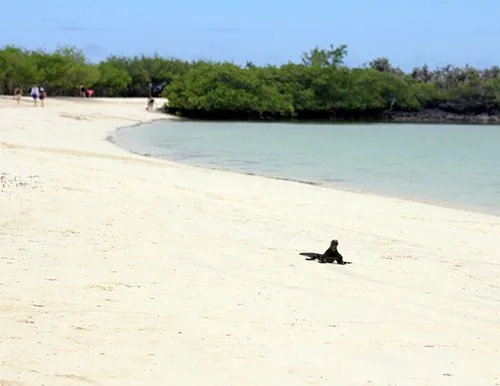
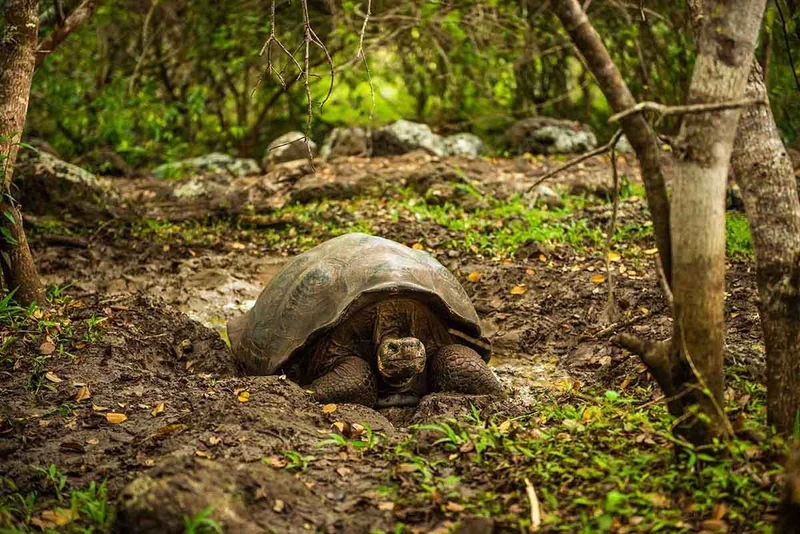
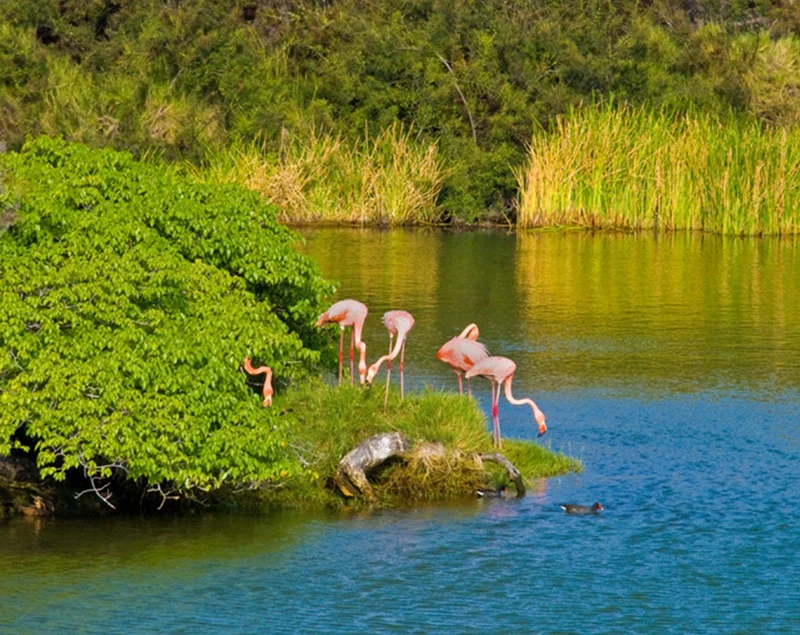
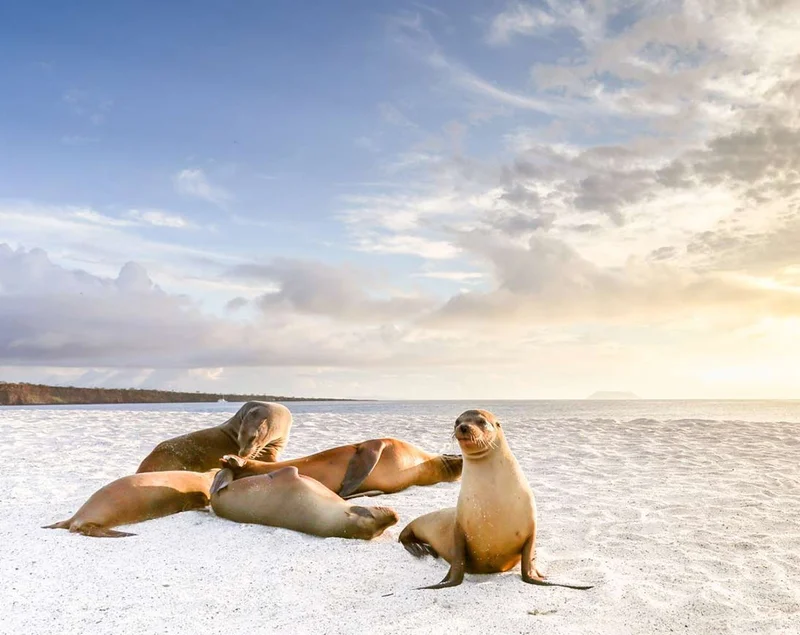
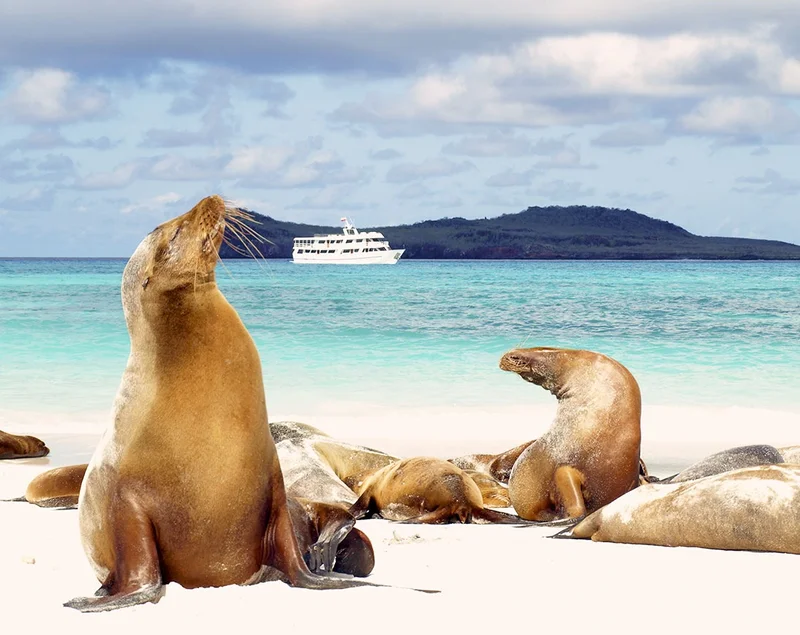


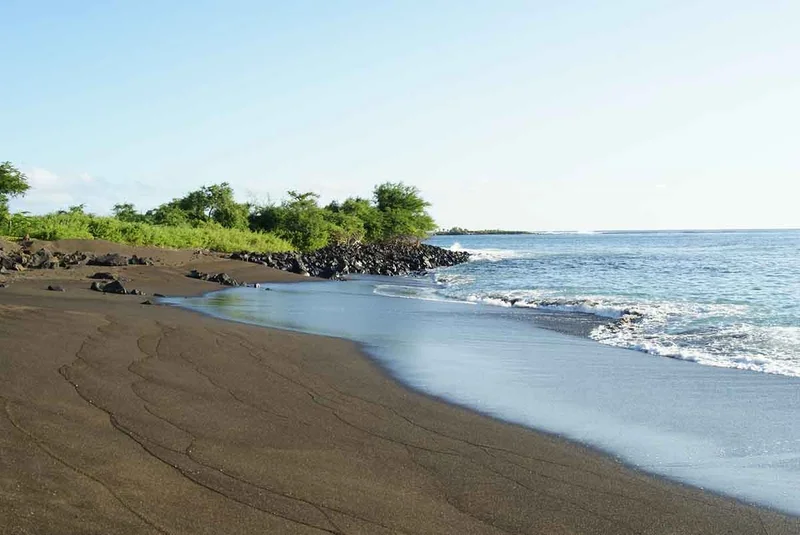
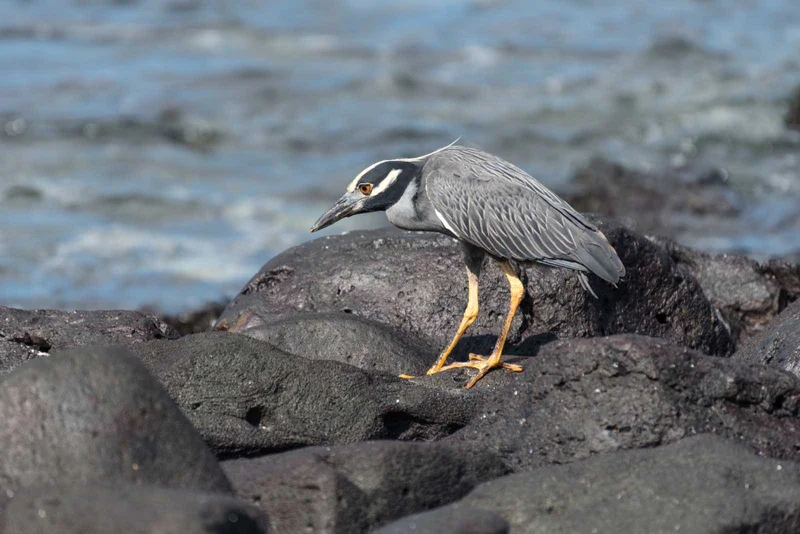
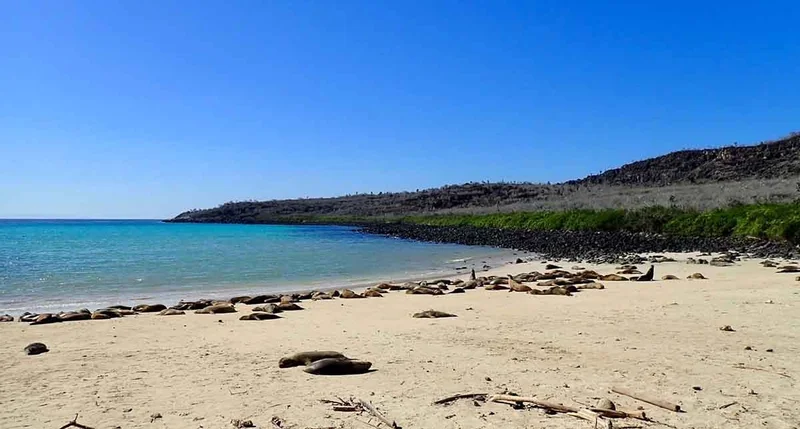
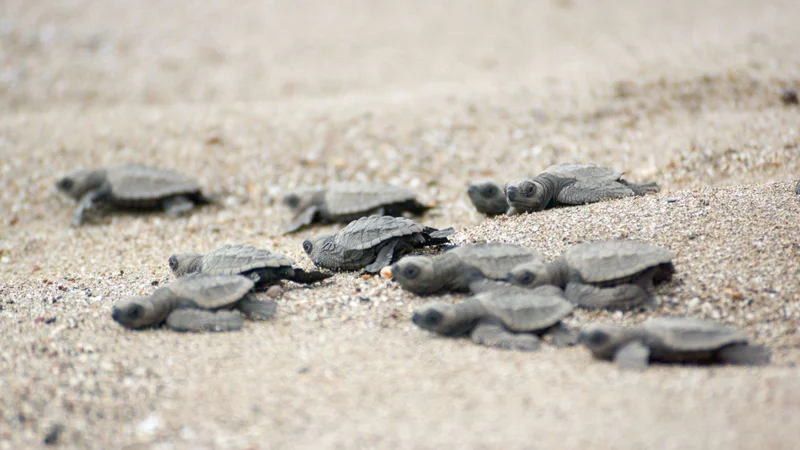
8 Day Galapagos Itinerary Includes
- Scheduled visits and activities with a professional bilingual guide
- All meals on board, some snacks, purified water, tea and coffee
- Accommodation in a standard cabin with private bathroom and air conditioning
- Snorkeling equipment (mask, lenses, fins), sea-kayaks
- Assistance at the Airport and 24/7 during the trip
8 Day Galapagos Itinerary Does not Include
- Air tickets to / from Galapagos from / to Quito, Guayaquil or combined route
- Entrance to the Galapagos National Park US $ 200 p.p. (cash in the Islands)
- Galapagos Control Card US $ 20 p.p. (at the airport before check-in)
- Wet-suits rental on board (in cash)
- Soft and alcoholic drinks on board; personal expenses, extras and tips guide and crew (cash)
- Travel insurance with medical, cancellation and other unforeseen coverage
- Other services in Continental Ecuador and not specified in the program
8 Day Galapagos Itinerary Highlights
- White coral pristine beaches at Mosquera
- The magic of Darwin’s Bay & Prince Philip’s Steps in one day
- Land iguanas, petrels, finches and amazing snorkeling at Plaza and Santa Fe
- Untamed wildlife at Chinese Hat
- One of the best sites for snorkeling: Kicker Rock
- The best of Española: Garner Bay and Suarez Point
- Swim with penguins and other charming marine life at Bartolome
Itinerary Map

Why travel with us?
Similar Itineraries



